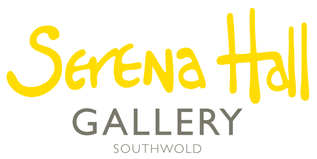
Barbara Peirson
Who or what inspires your work?
The coast and countryside of East Anglia has been my main inspiration for quite a while now because that is where I walk most days - the process of walking, discovering and getting to know the landscape often turns into paintings. I also draw upon my background of working in the theatre, not consciously but I am aware there is a sense of narrative in my paintings that must come from there.
What is your favourite medium?
Although I love oil paint the most I mainly use acrylics. Initially I used them for pragmatic reasons. When I used to work from the kitchen table they were best because they give off no pungent fumes. Then as I began to familiarise myself with the idiosyncrasies and behaviours of each colour and the different brands I grew to love them. There are endless possibilities. It’s an exciting exploration.
How do you like to work, do you have a home studio?
I like to start first thing in the morning when the dreams are still lingering in my mind, so I have a room at home where I can get cracking before dawn while I’m still in my pyjamas. I also rent a larger studio in the business centre down the road. I can make bigger paintings there and have the work spread out. It’s great to be amongst other small businesses too, my framer is there which is really handy, there are other artists, a printmaking studio, as well as a few bakeries for tempting snacks. It’s convivial there and gives a sense of ‘going to work’ - otherwise I might stay in my pyjamas all day!
Are your paintings of real or imagined people/places?
The paintings are mostly real places but painted from memory. I draw upon the memory of the feeling of being there and the spirit of a place. Once I’ve captured that, the figures arrive almost of their own accord, sometimes they might resemble people I’ve seen or people I know but mostly that’s not deliberate. The figures usually start with a blob of colour which I give legs to and then that suggests a posture and a mood and I follow that then gradually they come to life.
Do you make preparatory drawings before you start a painting?
I don’t make preparatory drawings. I start by applying colour to a prepared panel or canvas and I see what happens next, it’s as if the painting is hiding in the paint and my job is to reveal it, to find it, like being an archeologogist.
Did you always want to be an artist?
Looking back perhaps I did but when I was younger I didn’t realise that I could. I thought you had to be born with a ‘gift’ and I didn’t feel gifted. After a trip to the Louvre as a teenager, my dream was to become a restorator so I took sciences at school with a view to taking a chemistry degree and get into it that way. When I failed all my science exams a wonderful teacher encouraged me to apply to drama school, I was lucky enough to get in and lucky again to get a wonderful job in a theatre company as soon as I graduated, so I‘ve followed that path for most of my life. I’ve always sketched and painted, always carrying sketchbooks with me, then paints as well, so that I could paint when I was in tour. Gradually painting took over as my main pursuit and now it seems that all of the other creative experiences have been a way of preparing the ground.
What do you enjoy most about being an artist?
I love being able to paint whenever and wherever I like. There is a meditative quality to painting. As soon as I put paint onto a surface I instantly relax and feel I’ve come back to myself. I experience being present in the moment.
What advice would you give your younger self?
In a way our younger selves are always present so it’s useful to talk to them as a nurturing parent would, with encouragement and reassurance and a loving embrace.
“You can do it!”; “It’ll work out fine”; “Go for it!”; “All will be well.”; “Have fun!”; “ Keep playing!”
How do you overcome creative blocks?
I don’t really experience creative blocks but if I find myself tidying the cutlery drawer or ironing a jaycloth I realise I’m avoiding getting on with it! I think the secret is to accept that what I’m likely to paint will look terrible at first. It will be uncomfortable. You have to go through that - like wading through mud to get to a beautiful beach.
Do you have a favourite artist and why?
The list is long but Mary Fedden comes to mind first for her mastery with colour and her ease with the materials. Her paintings exude her love for her subject matters - a love of life!
